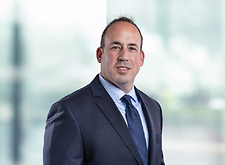Permit Process To-Dos: How to Navigate NY’s Proposed Large-Scale Renewables Rules
On September 16, 2020, the newly created Office of Renewable Energy Siting (“ORES”) issued proposed regulations to implement New York State’s new large-scale renewable energy permitting process. This much-anticipated regulatory framework was required under the recent Accelerated Renewable Energy Growth and Community Benefit Act (the “Act”) establishing the new “Section 94-c” permitting process as the successor to Article 10. In this alert, we lay out the pre- and post-application process steps to which developers with projects in their pipeline should be attuned right now.
The proposed regulations are divided into two parts – the first part sets forth the details of the permitting process and application requirements, while the second establishes uniform standards and conditions for proposed projects. We wrote about the standards and conditions in our previous client alert found here.
This alert discusses the ORES process requirements in the proposed regulations, through which many market participants are currently combing as they prepare applications to be submitted as soon as possible. These procedures include the requirements for the pre-application process, the structure of the application itself, adjudicatory process for any hearings, post-submission amendments, and intervenor funding. The full text of the proposed regulations can be found here, and the deadline for public comment on the proposed procedures is November 16, 2020.
The Pre-Application Process
The proposed pre-application process has three major requirements: a consultation with local agencies, a community engagement component, and the submission of several draft reports to ORES.
First, applicants must meet with the host municipality where the proposed facility will be located. At the meeting, the applicant must provide several key pieces of information, including a description of the proposed facility and its environmental setting, a map highlighting relevant regulatory boundaries, a summary of substantive local laws applicable to construction, operation, and maintenance of the proposed facility, and identification of any substantive local laws that the applicant will request ORES to find unreasonably burdensome. Clearly, such meeting should not be undertaken without preparation, obtaining municipal support for amendments to potentially unreasonably burdensome local regulations and reduce the overall ORES process time. This meeting must take place at least sixty days in advance of filing the application. If the applicant is unable to secure this meeting, they must include in their final application a detailed explanation of their efforts to secure the meeting.
In addition to the municipal meeting, the applicant must meet with community members who may be adversely impacted by the siting of the proposed facility. This meeting must take place after the municipal meeting, but also at least sixty days in advance of filing the application. Applicants should note that the final application requires a copy of transcripts, presentation materials, and a summary of questions and answers presented at both meetings.
Applicants must also prepare several draft reports, which are designed to streamline the environmental review assessment. These reports should be conducted and submitted to ORES at the earliest point possible during preliminary project planning.
- Wetland Delineation Report
An applicant must complete a draft wetland delineation report, which summarizes the jurisdictional boundaries of all federal, state, and locally regulated wetlands present on the facility site and within 100 feet of the construction site. Once the report is submitted to ORES, the New York State Department of Environmental Conservation (“NYSDEC”) may weigh in on whether the proposed facility could impact regulated wetlands. ORES must provide a final approved jurisdictional determination to the applicant within sixty days of receiving the draft wetland delineation report, weather permitting.
- Stream Delineation Report
An applicant must also complete a stream delineation report, which identifies the federal and State waters regulated under Article 15 of the New York Environmental Conservation Law, as well as locally regulated surface waters. Once again, NYSDEC will weigh in and advise ORES which parts of the proposed project could impact water regulated under Article 15 and Section 401 of the Clean Water Act. Here too, ORES has sixty days to provide the applicant with a determination, weather permitting.
- Wildlife Characterization Report
An applicant is required to prepare a wildlife site characterization report, identifying any threatened or endangered species or species of special concern. The report must include a list of species documented at the proposed facility; an evaluation of the current suitability of the habitat for each species; a description of landscape features and resources of potential concern; a summary of geographical, topographical, and other physical features in the area of the facility; and a review of National Audubon Society climate change modeling for any documented bird species.
Within four weeks of submitting the wildlife characterization report, ORES and NYSDEC must meet with the applicant to provide feedback, indicate if occupied habitats of threatened and endangered species are present on the site, and recommend any habitat assessments and field surveys that can be completed within one year, considering the appropriate seasonal window. If a survey or habitat assessment is required, the applicant must develop a pre-construction plan in consultation with both agencies.
Once the applicant submits all of the draft survey reports, the agencies will have thirty days to meet and review the materials. After that, ORES has an additional thirty days to issue its draft determination.
- Archaeological/Cultural Resources Study
Finally, if any portion of the project site is within an area of archeological sensitivity, the applicant must conduct a Phase 1A archaeological/cultural resources study. Once the applicant submits the results of this study, ORES has sixty days to inform the applicant of the need for a Phase 1B or a Phase 2 study.
Application Requirements
The regulations also set forth the proposed 94-c permit application requirements. In addition to the standard application requirements, the applicant must submit twenty-five exhibits, many of which will be familiar to industry participants from Article 10 but the specifics of which should be reviewed closely for differences. These include:
|
|
In addition to the exhibits described above, the applicant must submit any requests for site-specific conditions, whether in lieu of an exhibit requirement or for a deviation from the standards and uniform conditions. The regulations also impose a fee – in an amount equal to $1,000 per 1,000 KW of capacity – that will be deposited into the “local agency account,” 75 percent of which is reserved for funding of local agency participation in the permitting process and the remainder of which is available for qualified intervenors.
The applicant must file and serve the completed application on ORES and other various state and municipal agencies, including NYSDEC; the Department of Public Service; the chief executive officer of each municipality where the facility will be located; the commissioners of the Department of Agriculture and Markets, Department of Health, Department of Transportation, and Office of Parks, Recreation and Historic Preservation; the attorney general; and on the chief executive officer of any other agency that would, absent Section 94-c of the Executive Law, have permitting or approval authority. In addition, if the proposed facility will be located in New York City, copies must be served on the Borough President of any affected borough and the Community Board of any affected areas served by a Community Board. Furthermore, no fewer than three days before filing, the applicant must: (1) publish notice of filing in local newspapers; (2) provide written notice to all persons residing within one mile of the proposed solar facility or within five miles of the proposed wind facility; and (3) provide notice to each member of the state legislature in whose district any portion of the proposed facility is to be located. The notice must include information regarding the availability of local agency and intervenor funds.
Transfer Applications
Applicants with projects 20 to 25 MWs in size (so-called “opt-in renewable energy facilities”) currently involved with reviews under the State Environmental Quality Review Act (“SEQRA”) at the local level, and those applicants currently involved in Article 10 proceedings, may elect to transfer their applications to Section 94-c review.
Applicants for opt-in renewable energy facilities must provide written notice of their election to be subject to Section 94-c review to the lead agency conducting the environmental impact review. The applicant must submit to ORES a copy of the written notice, a transfer application form, the twenty-five exhibits described above, copies of documentation identifying those matters and issues that have been identified and resolved in the alternate permitting process, and the required fees.
Applicants for pending Article 10 facilities – for which a completeness determination has been issued – must provide written notice of their election to be subject to Section 94-c review to the Secretary of the Public Service Commission. The applicant must submit to ORES a copy of this notice, a transfer application form, the twenty-five exhibits described above, a copy of the application materials submitted pursuant to Article 10 of the Public Service Law, copies of documentation identifying those matters and issues that have been identified and resolved in the Article 10 proceeding, and the required fees. If the applicant wishes to be subject to a uniform standard or condition, they must also provide an explanation as to how the Article 10 application materials demonstrate compliance with the permit condition.
Timeline for the Processing of Applications
Once an application is submitted, ORES will have sixty days to issue a completeness determination. If ORES fails to provide notice of its determination of completeness or incompleteness within this timeframe, the application will be deemed complete.
After the determination is issued, ORES will have sixty days to prepare and issue a draft permit for public review and comment. Within sixty days of the issuance of the draft permit, a public hearing must be held to hear and receive the unsworn statements of parties and non-parties relating to the siting permit application. Although these statements will not constitute evidence, they may be used by the ALJ as a basis for further inquiry of the parties and potential parties at the issues determination stage.
At the issues determination stage, certain parties can file papers concerning potential substantive and significant issues. Within thirty days of receiving the written submissions, the ALJ must determine the adjudicable issues and which persons will be granted party status. If the ALJ determines that there are no adjudicable issues, then an adjudicatory hearing will not be held. The ALJ must also make a ruling on the merits of any legal issues that do not depend on the resolution of disputed issues of fact.
For cases where a hearing is held, the ALJ is required to issue a decision and report within forty-five days of the close of the record. After the parties receive the report and recommendation, they will have fourteen days to file their comments. In addition, the ORES staff will have fourteen days to submit a written summary and assessment of the public comments received during the public comment period.
In total, for major renewable energy facilities in which the proposed site is a repurposed site – meaning, an existing or abandoned commercial or industrial use property, which has been remediated to permit the siting of a major renewable energy facility – ORES must make a final determination on the application within six months of its completeness determination. For all other major renewable energy facilities, ORES has one year to issue a final determination.
Amendments to an Application
The regulations also set forth a procedure for amending applications. Amendments must be made prior to ORES issuing its completeness determination.
A request for an amendment must include a description of the proposed change, a justification as to why the change is required, and an anticipated timeframe for resolution. Once the applicant submits an amendment request, ORES has fifteen days to notify the applicant as to whether the request is considered a “minor change,” which will be processed by ORES, or if it is a “major amendment,” in which case the applicant must submit only those application materials that reflect changes to the original submission. Major amendments are only those “likely to result in any material increase in any identified environmental impacts, any significant adverse environmental impact not previously identified, or any new site-specific standards and conditions,” and may only be filed with the express, written permission of ORES.
During the time in which ORES is conducting its review of the amendment request, the completeness determination on the original application will be suspended.
Intervenor Funding
Any requests for intervenor funds must be submitted to ORES within thirty days of the applicant filing the permit application. Within thirty days of this deadline, the assigned ALJ will award funds to local agencies and potential community intervenors whose requests comply with the eleven separate requirements enumerated in the proposed regulations, all of which are meant to inform the ultimate determination whether use of the funds as proposed will contribute to a complete record leading to an informed permit decision.
Please stay tuned to the Hodgson Russ Renewable Energy Practice for further analysis on the proposed Section 94-c regulations. If you have questions about the proposed regulations, the rulemaking process or renewable energy projects generally, please contact Charles Malcomb (716.848.1261), Daniel Spitzer (716.848.1420), John Dax (518-433-2414), or a member of our Renewable Energy Practice.
If you received this alert from a third party or from visiting our website, and would like to be added to our Renewable Energy alert mailing list or any other of our mailing lists, please visit us HERE.
Featured
- Partner
- Partner
- Partner
- Partner
- Partner
- Partner
- Partner
- Partner
- Partner
- Senior Associate
- Partner
- Partner
- Co-Chair of the Firm, Partner
- Partner














